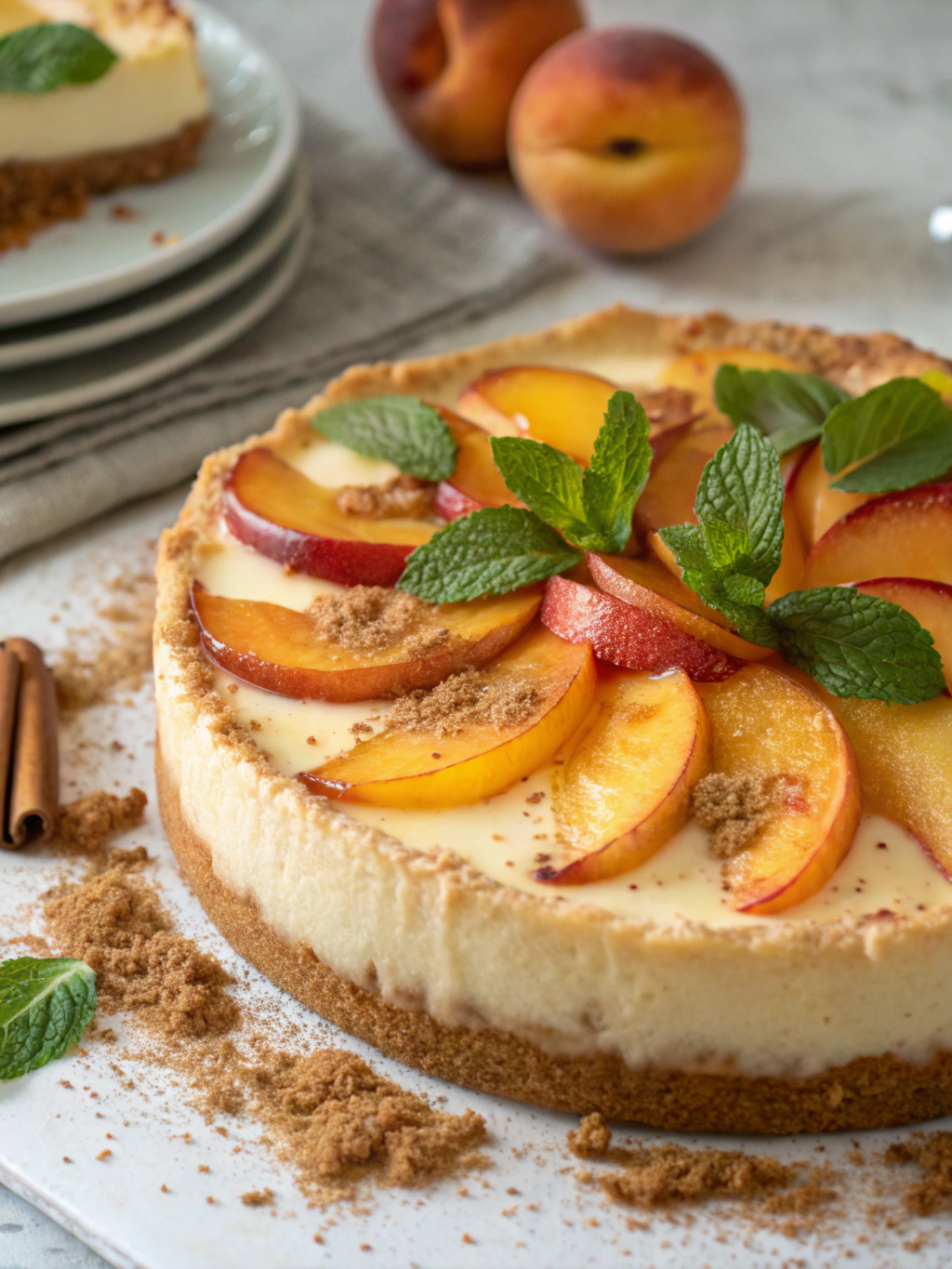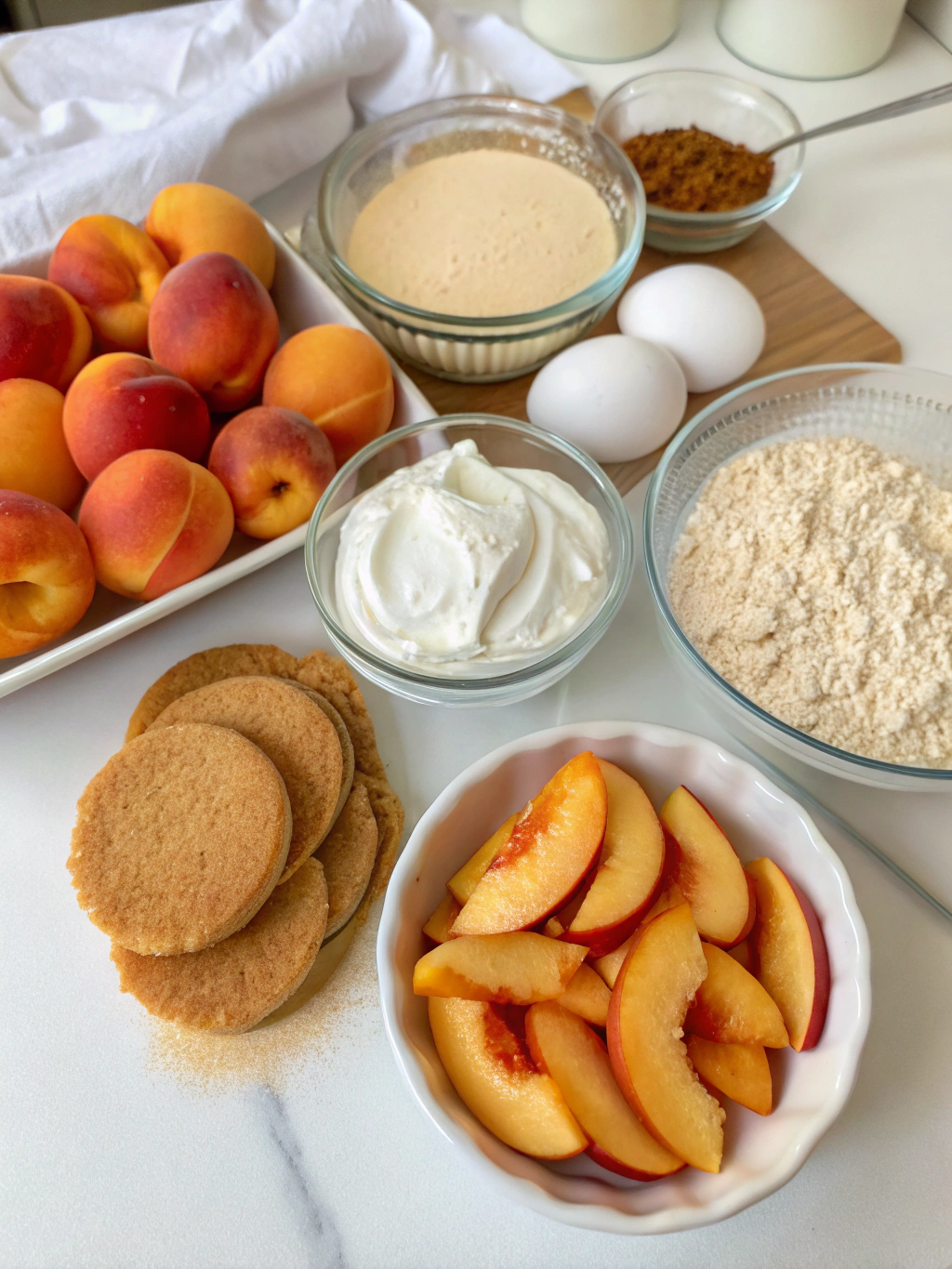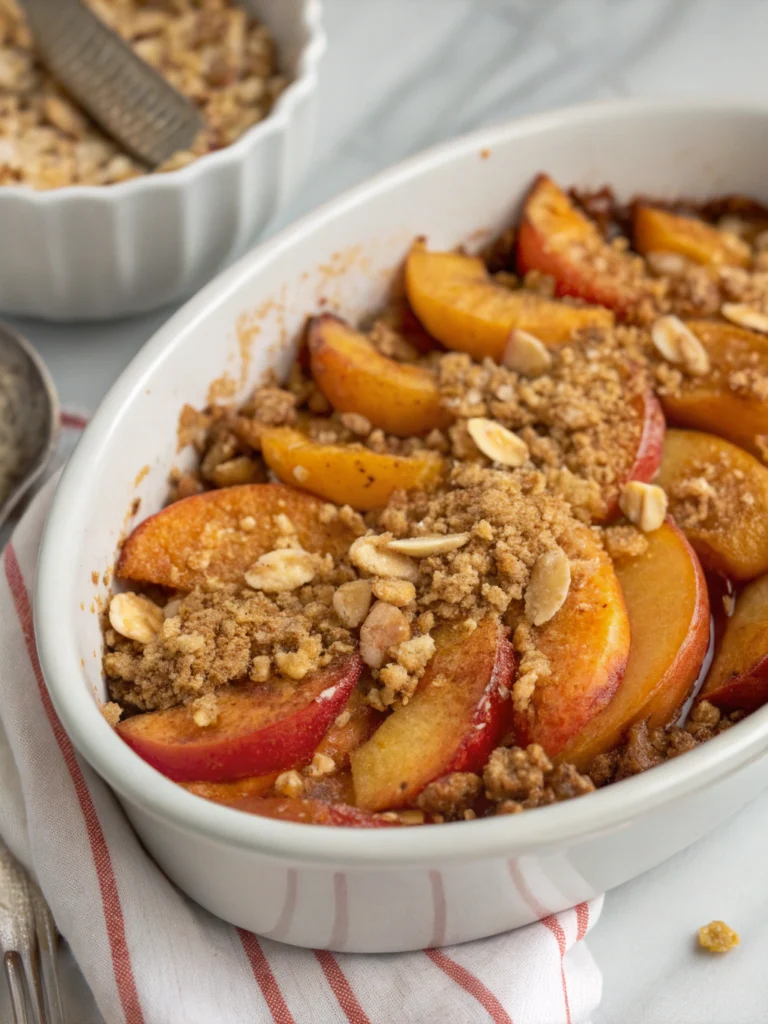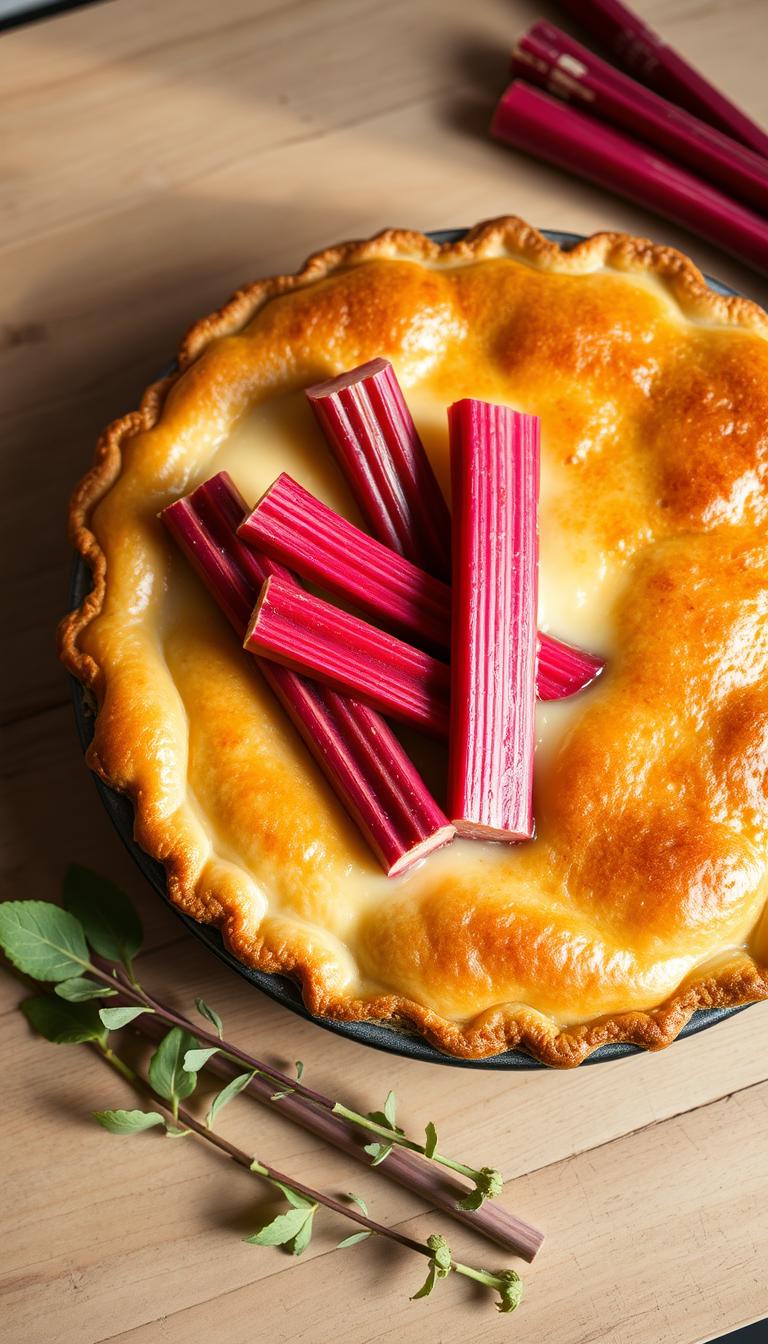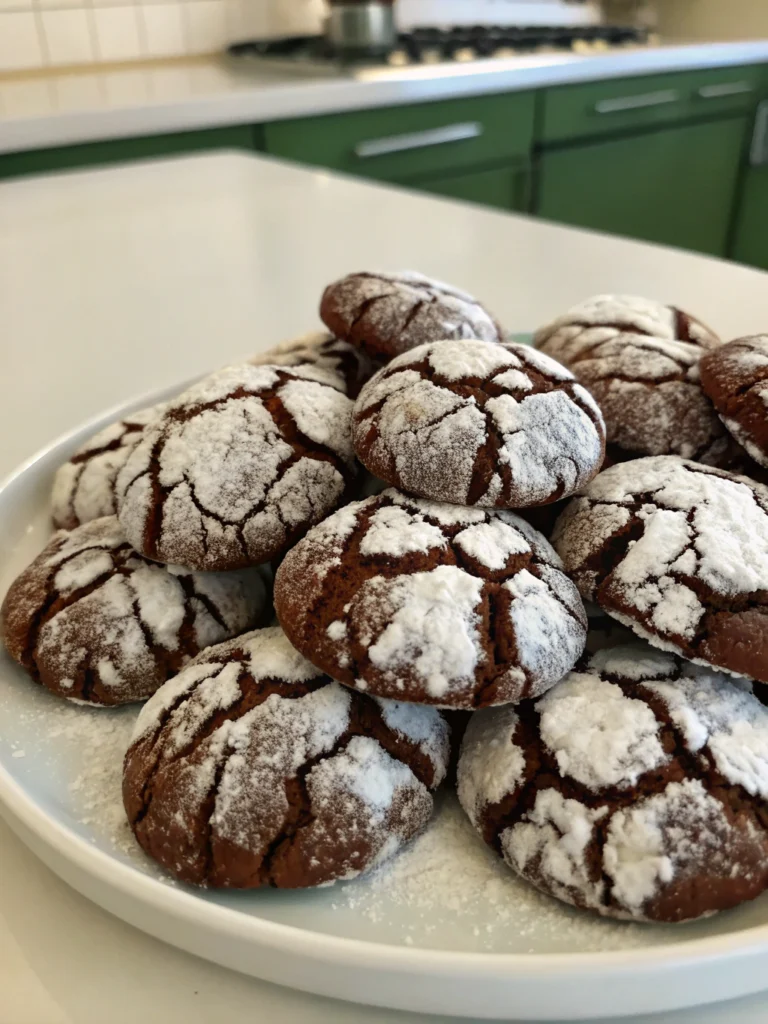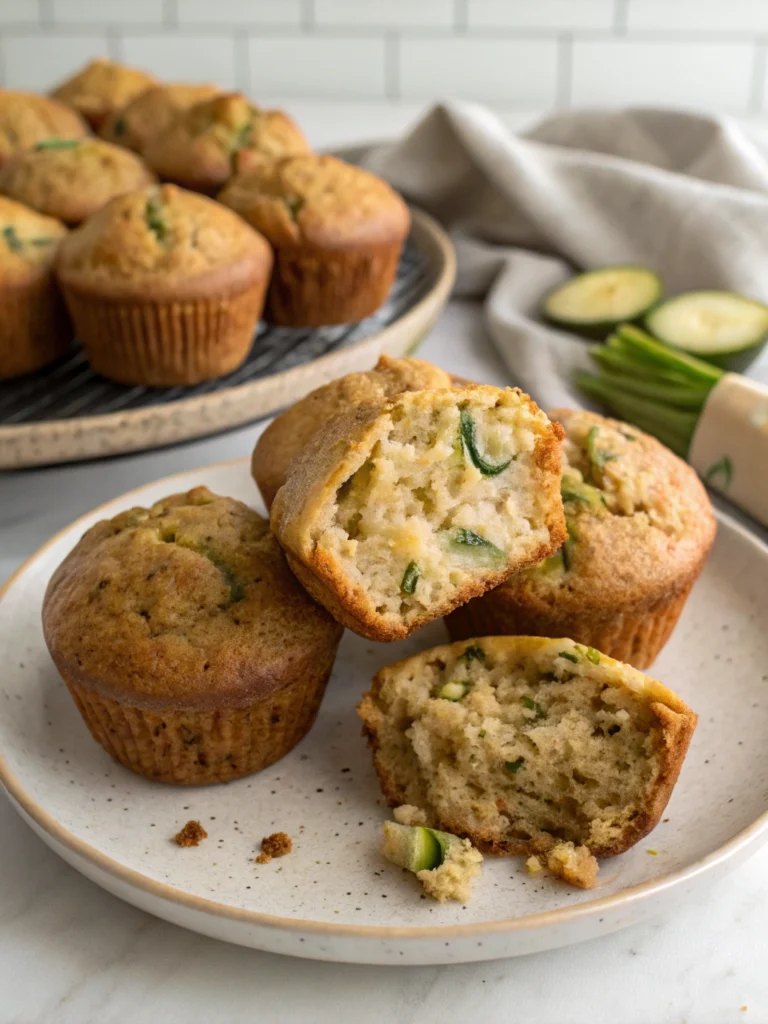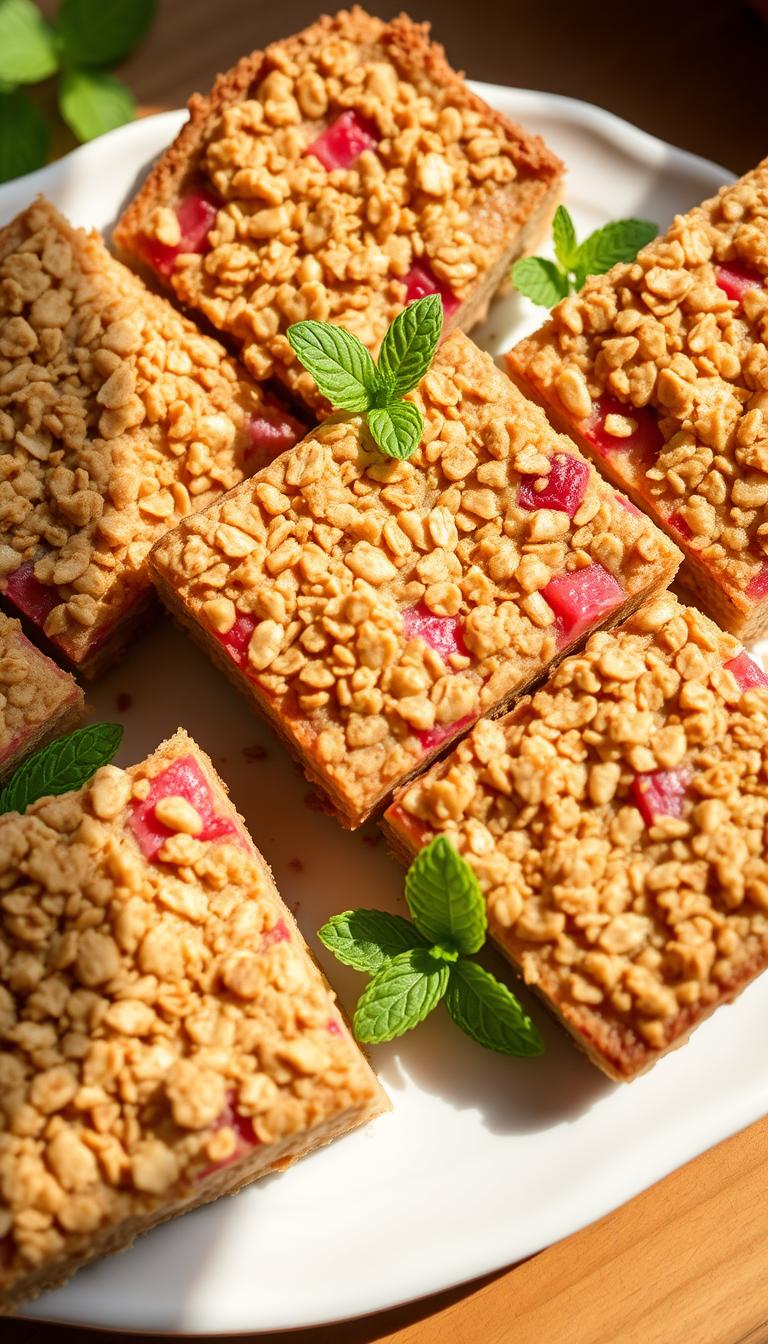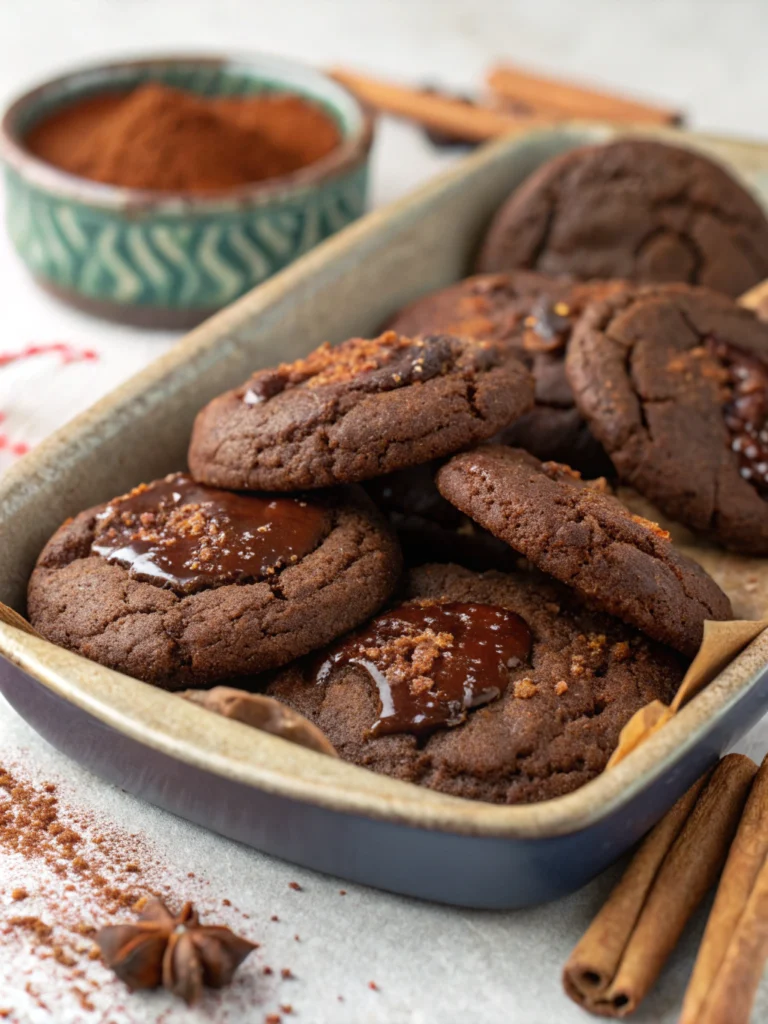Peach Cheesecake
This dreamy peach cheesecake combines a buttery graham cracker crust with a silky smooth cream cheese filling and fresh, juicy peaches for the perfect summer dessert. Simple to make yet impressively delicious!
Easy Peach Cheesecake Recipe
There’s something magical about the combination of tangy cream cheese and sweet, juicy peaches that creates an irresistible dessert experience. This classic peach cheesecake recipe celebrates summer’s most beloved stone fruit in a rich, creamy dessert that looks as beautiful as it tastes. Perfect for warm weather gatherings, this dessert has been a staple at summer potlucks and family celebrations for generations, combining the beloved New York-style cheesecake with the seasonal freshness of ripe peaches.
THIS RECIPE:
- Features a perfect balance of creamy cheesecake and sweet peach flavor
- Uses both fresh peaches and peach preserves for intense flavor
- Includes a foolproof water bath method for crack-free results
- Can be made up to 3 days ahead for stress-free entertaining
| Recipe Detail | Information |
|---|---|
| Prep Time | 30 minutes |
| Cook Time | 1 hour 10 minutes |
| Cooling Time | 4 hours (minimum) |
| Total Time | 5 hours 40 minutes |
| Servings | 12 slices |
| Yield | One 9-inch cheesecake |
Don’t let the multiple steps intimidate you—this peach cheesecake recipe is actually quite straightforward. The creamy texture melts in your mouth while the peach topping provides the perfect sweet-tart contrast. Even baking beginners can achieve impressive results by following the clear instructions, making this an accessible yet impressive dessert for any occasion.
Ingredients for Peach Cheesecake
Using quality ingredients makes a significant difference in your homemade peach cheesecake. The star ingredients—cream cheese, fresh peaches, and graham crackers—should be selected with care for the best flavor and texture. Room temperature ingredients are essential for achieving that velvety smooth cheesecake filling without lumps.
For the Graham Cracker Crust:
- 2 cups graham cracker crumbs (about 15-16 full sheets)
- 1/3 cup granulated sugar
- 1/2 cup (1 stick) unsalted butter, melted
- 1/4 teaspoon salt
For the Cheesecake Filling:
- 32 ounces (4 blocks) full-fat cream cheese, softened to room temperature
- 1 cup granulated sugar
- 1/2 cup sour cream, room temperature
- 2 teaspoons pure vanilla extract
- 4 large eggs, room temperature
- 1/4 cup all-purpose flour
- 1/4 cup peach preserves
For the Peach Topping:
- 4 medium fresh peaches, sliced (about 3 cups)
- 1/4 cup granulated sugar
- 1 tablespoon lemon juice
- 1/4 cup water
- 2 tablespoons cornstarch mixed with 2 tablespoons cold water
- 1/2 teaspoon vanilla extract
| Ingredient Category | Recommended Quantity | Quality Tips |
|---|---|---|
| Cream Cheese | 32 oz (4 blocks) | Use full-fat Philadelphia or other high-quality brand for best texture; avoid low-fat versions |
| Fresh Peaches | 4 medium (3 cups sliced) | Choose ripe but firm peaches that yield slightly to pressure with a sweet aroma |
| Graham Crackers | 15-16 full sheets | Honey graham crackers provide the best flavor for the crust |
| Eggs | 4 large | Always use room temperature eggs for better incorporation |
| Peach Preserves | 1/4 cup | Select a high-quality preserve with visible fruit pieces for authentic flavor |
How to Make Peach Cheesecake
Creating the perfect homemade peach cheesecake requires attention to detail and proper technique, but don’t worry—each step is designed to ensure your success. The water bath method might seem intimidating, but it’s the secret to creating that professional bakery-quality cheesecake without cracks or sinking centers.
For the Graham Cracker Crust:
- Preheat your oven to 325°F (165°C) and set a rack in the middle position.
- In a large bowl, combine the graham cracker crumbs, sugar, and salt.
- Pour in the melted butter and mix until the mixture resembles wet sand and holds together when pressed.
- Press the mixture firmly into the bottom and about 1-1.5 inches up the sides of a 9-inch springform pan. Use the bottom of a measuring cup to compact the crust evenly.
- Bake the crust for 10 minutes, then remove and allow to cool while preparing the filling. Keep the oven on.
For the Cheesecake Filling:
- Wrap the outside of your springform pan with a double layer of heavy-duty aluminum foil, ensuring there are no gaps where water could seep in during baking.
- In the bowl of a stand mixer fitted with the paddle attachment (or using a hand mixer), beat the cream cheese on medium-low speed until completely smooth and free of lumps, about 4 minutes.
- Add the sugar and beat for another 2 minutes until well incorporated.
- Beat in the sour cream and vanilla extract until combined.
- Add eggs one at a time, mixing on low speed just until each is incorporated. Do not overmix.
- Add the flour and mix on low until just combined.
- Gently fold in the peach preserves with a rubber spatula, creating slight swirls but not fully mixing.
- Pour the filling into the cooled crust and smooth the top with a spatula.
Baking the Cheesecake:
- Place the foil-wrapped springform pan into a larger roasting pan.
- Pour hot water into the roasting pan until it reaches halfway up the sides of the springform pan.
- Carefully transfer to the oven and bake for 65-70 minutes, until the edges are set but the center still has a slight jiggle.
- Turn off the oven and crack the door open slightly. Allow the cheesecake to cool in the oven for 1 hour.
- Remove from the oven and water bath, discard the foil, and cool completely on a wire rack for 2 hours.
- Refrigerate uncovered for at least 4 hours or preferably overnight.
For the Peach Topping:
- In a medium saucepan, combine the sliced peaches, sugar, and lemon juice. Cook over medium heat for 5 minutes until peaches soften.
- Add water and bring to a simmer.
- Stir in the cornstarch mixture and cook, stirring constantly, until the mixture thickens, about 2 minutes.
- Remove from heat and stir in vanilla extract.
- Allow to cool completely before spooning over the chilled cheesecake.
Tips for Making Peach Cheesecake
Pro tip: The number one secret to crack-free cheesecake is preventing sudden temperature changes. Never skip the slow cooling process!
- Bring ALL refrigerated ingredients to room temperature (minimum 2 hours) before mixing for the smoothest texture
- Mix on low speed once eggs are added to prevent incorporating excess air that causes cracks
- Always use the water bath method to ensure gentle, even baking
- For clean slices, dip your knife in hot water and wipe clean between each cut
| Technique | Recommendation | Why It Matters |
|---|---|---|
| Crust Compacting | Use firm pressure with flat-bottomed tool | Creates a sturdy base that won’t crumble when sliced |
| Cream Cheese Mixing | Beat until completely smooth before adding any other ingredients | Prevents lumps in final cheesecake |
| Water Bath Setup | Double-wrap springform pan with heavy-duty foil | Prevents water leakage that would make crust soggy |
| Cooling Process | Cool gradually in turned-off oven, then room temperature, then refrigerator | Prevents cracks from sudden temperature changes |
When selecting peaches for your topping, look for fruit that’s fragrant and yields slightly to gentle pressure. The best peaches for cheesecake are those that are sweet but still firm enough to hold their shape when sliced. If fresh peaches aren’t in season, premium quality frozen peaches (thawed and drained) can work as a substitute.
Make-Ahead Instructions
This peach cheesecake is perfect for preparing in advance, which can make entertaining much less stressful. Here’s how to break down the preparation:
The graham cracker crust can be prepared up to 2 days ahead. Simply press into the springform pan, bake as directed, cool completely, then cover tightly with plastic wrap and refrigerate until ready to fill.
The entire cheesecake (without topping) can be baked up to 3 days ahead. After the initial chilling period, cover tightly with plastic wrap and refrigerate. The cheesecake actually improves with 24 hours of chilling as flavors meld and the texture firms up perfectly.
The peach topping can be made up to 2 days ahead and stored in an airtight container in the refrigerator. Warm it slightly to loosen the consistency before spooning over the cheesecake.
For a complete make-ahead dessert, assemble the entire cheesecake with topping up to 24 hours before serving, keeping refrigerated until about 20 minutes before serving time.
Storing Leftovers
Properly stored, your homemade peach cheesecake will maintain its quality for several days. After serving, cover any exposed areas with plastic wrap pressed directly against the cut sections to prevent the cheesecake from absorbing refrigerator odors or forming a skin.
Store leftover peach cheesecake in an airtight container in the refrigerator for up to 5 days. The crust may soften slightly over time, but the flavor will remain delicious.
For individual portions, slice the cheesecake and place pieces in single-serve containers for grab-and-go treats. Allow refrigerated cheesecake to sit at room temperature for 20-30 minutes before serving for the best flavor and texture.
Pro tip: Never leave cheesecake at room temperature for more than 2 hours due to food safety concerns with the dairy ingredients.
Freezing Peach Cheesecake
This peach cheesecake freezes beautifully, making it perfect for advance preparation for special occasions. For best results, freeze the cheesecake without the peach topping, adding it fresh after thawing.
To freeze the entire cheesecake:
- Allow the cheesecake to cool completely according to the recipe.
- Remove the sides of the springform pan but leave the bottom in place.
- Wrap the cheesecake tightly in a double layer of plastic wrap, then a layer of aluminum foil.
- Freeze for up to 2 months.
For individual slices:
- Cut the chilled cheesecake into portions.
- Place slices on a baking sheet and freeze until solid, about 2 hours.
- Wrap each slice individually in plastic wrap, then place in a freezer bag.
- Freeze for up to 2 months.
To thaw, place the wrapped cheesecake in the refrigerator overnight (about 8 hours). Remove the plastic wrap to prevent condensation from making the crust soggy. Add the fresh peach topping after thawing for the best texture and appearance.
Serving Suggestions
Your homemade peach cheesecake deserves to be showcased as the star dessert it is! Serve it on a beautiful cake stand to highlight its gorgeous layers and colors. For the perfect slice, use a sharp knife dipped in hot water and wiped clean between cuts.
Enhance your peach cheesecake with these complementary additions:
- A light dusting of powdered sugar adds elegant visual appeal
- A small dollop of freshly whipped cream provides a creamy contrast
- Mint leaves make a beautiful garnish and add a fresh aromatic element
- Toasted sliced almonds or crushed amaretti cookies add delightful crunch
This cheesecake pairs wonderfully with:
- Sweet dessert wines like Moscato or Sauternes
- Sparkling wines such as Prosecco or Champagne
- Southern sweet tea with mint for a non-alcoholic option
- Coffee or espresso to balance the sweetness
Serve the cheesecake slightly chilled but not cold—remove from the refrigerator about 20-30 minutes before serving for the best flavor experience and creamy texture.
FAQ
Can I use canned peaches instead of fresh?
Yes, you can substitute canned peaches in the topping. Choose peaches packed in juice rather than syrup, drain well, and reduce the added sugar by half. You may also need to reduce the amount of water in the topping since canned peaches release more liquid.
Why did my cheesecake crack, and how can I fix it?
Cheesecakes typically crack from overmixing (which incorporates too much air), overbaking, or sudden temperature changes. To fix a cracked cheesecake, simply cover it with the peach topping—no one will know! For future bakes, ensure you’re mixing on low speed, using a water bath, and cooling the cheesecake gradually.
Can I make this cheesecake without a water bath?
While you can technically bake the cheesecake without a water bath, it’s not recommended. The water bath provides humidity and even heat distribution that prevents cracks and helps achieve that professional smooth texture. If you must skip it, be extra careful not to overmix the batter and accept that some cracking might occur.
What’s the best substitute for graham crackers in the crust?
Digestive biscuits make an excellent substitute for graham crackers and are widely available internationally. Vanilla wafers, gingersnaps, or even amaretti cookies can also create delicious alternative crusts—just adjust sugar as needed since some cookies are sweeter than graham crackers.
How can I tell when my cheesecake is perfectly baked?
A properly baked cheesecake will be set around the edges but still have a slight jiggle in the center (about 2-3 inches in diameter). The surface should be dry to the touch but not browned or cracked. Remember that the cheesecake will continue to set as it cools, so it’s better to slightly underbake than overbake.

